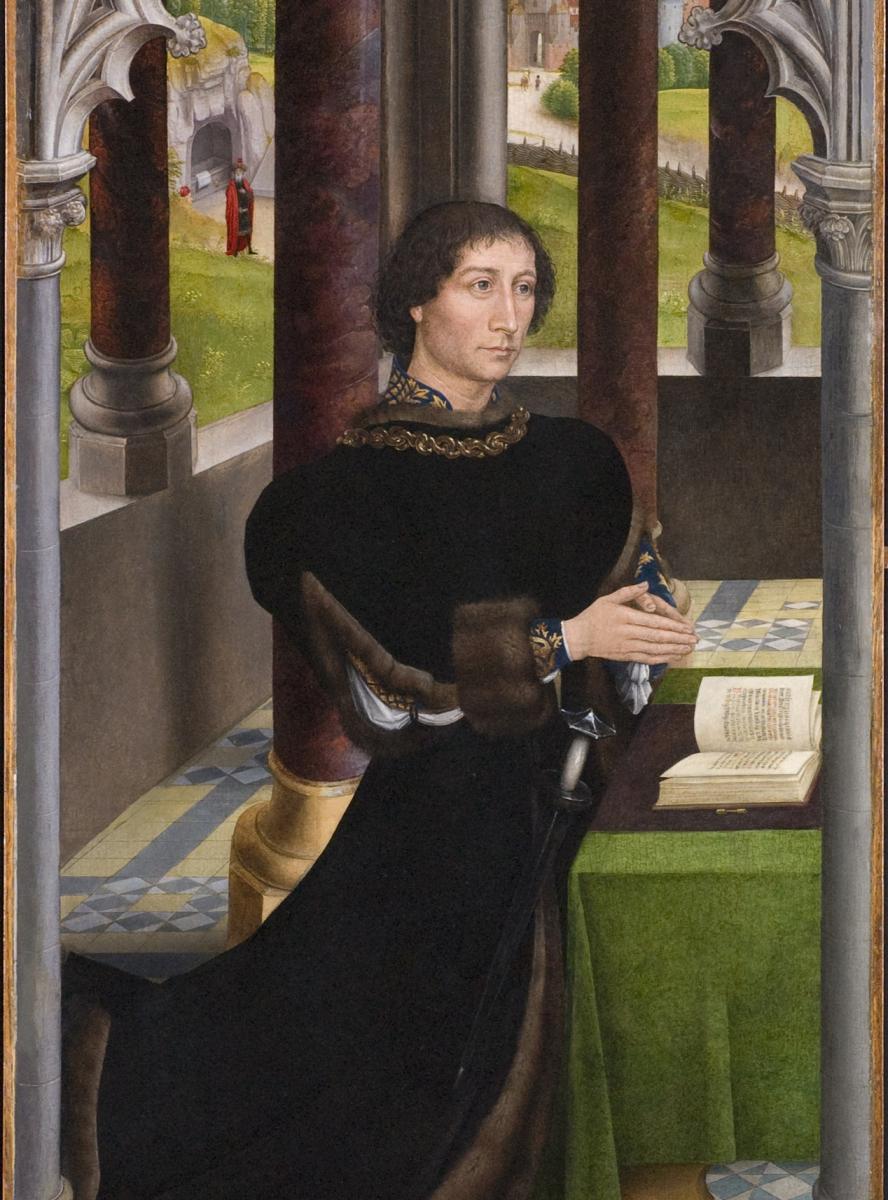Portrait by Memling returns to Bruges

The portrait of Francisco de Rojas, painted by Hans Memling in the 15th century, is returning to the city of Bruges, where it was painted. It was donated by American philanthropist Bill Middendorf and will be kept at St. John’s Hospital (the Memling Museum). The donation was made with guidance from King Baudouin Foundation US, part of the King Baudouin Foundation network.
Francisco de Rojas, the scion of a noble Spanish family and Ambassador of Spain to the Burgundian court, is portrayed on the left-hand panel (oil on wood; 50.5 cm wide and 104 cm high) of a triptych. On the right-hand panel stood a female figure, probably Mary, reading. It is no longer known with certainty what was on the central panel, although there are indications that it was the crucifixion of Christ.
“This is the first time we have received such an important donation”, said Till-Holger Borchert, artistic director of the Bruges Museums. Initially the work remains the property of KBF US, but it is immediately given on long-term loan to the Bruges Museums, which will later become its owner.
“This is one of the few representations we have providing evidence of the Spanish presence in Bruges, when it was a trading centre in the Middle Ages”, said Borchert. “We do have a lot of textual archive material, but few pictorial representations. This is a painting of a person from an important family, and furthermore it is by Memling, a leading citizen at the time and of course a very important artist.”
Hans Memling was born in Germany around 1430, and we know that he was working in the studio of Rogier van der Weyden in Brussels in 1465. Later he moved to Bruges, where he became one of the most influential artists in Northern Europe during his time. His religious works often incorporated portraits of his wealthy patrons - bankers, merchants, senior government or Church dignitaries and aristocrats.
The donor: Bill Middendorf
The work was donated by John William ‘Bill’ Middendorf, an American who has not only had a long and fruitful professional career but is also an enthusiastic art collector, particularly of old masters from the Low Countries. Middendorf studied naval science, served as an officer during WWII and subsequently obtained a Bachelor of Arts (Harvard) and MBA (University of New York). He began his career as an investment banker. Later he was asked to serve as US ambassador in the Netherlands (1969-1973). After returning to the US he became Secretary of State for the US Navy (1974-1977) and represented the US in the Organization of American States.
It is above all his passion for art and the old masters in particular that has led him to make this generous donation today. He has expressed his own creativity not only as a composer - for example writing a symphony to mark the 25-Year Jubilee of Queen Juliana of the Netherlands – but he has also drawn and painted throughout his life. He has sketched portraits of many of the prominent politicians he has encountered on the world stage.
“In the past 55 years I have discovered Bruges and visited it regularly”, said Middendorf. “I see it as a rare jewel, largely preserved as it was in the Middle Ages. The beauty of the city and the art from past centuries draw me back there again and again. Memling, one of the great masters, was a prominent citizen of the city. I also appreciate Till-Holger Borchert, both as an art historian and for his friendship that has grown through the arts over the decades. All these aspects contributed to my decision to ensure that this work from my collection, which I purchased in 2002 after the death of its previous private owner, would be returned to Bruges.”
KBFUS ART facilitates donations of art
A few years ago the King Baudouin Foundation US set up the KBFUS ART programme to help donors in the US with the complex cultural, legal and tax-related aspects of donating art across international borders. The donation of this work by Memling is a fine example of the role played by the King Baudouin Foundation’s network as a global philanthropic enabler, not only for donations of heritage items but also offering guidance with international philanthropic donations to projects or organisations, whether their work is social, cultural, medical, scientific or academic.
“The guidance we received from KBFUS was vital in making it possible for the painting to return to Bruges”, said Till-Holger Bolchert. “Thanks to the process that has been created by the KBFUS for donations of works of art, everything went smoothly. It is so amazing, I can hardly believe it is happening.”